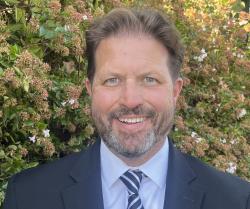Ask experienced teachers how things have changed in the American classroom in the wake of the COVID years, and after they are done sighing, they are certain to note a diminished capacity in their students to engage in good old-fashioned studying.
Gone is the archetypal American student of yore, once defined by virtues like diligence, determination, and the expectation that learning and fun are rarely one in the same. In its place is the omnipresent and unapologetic expectation of ease: open-note tests, study guides that essentially give away the questions on a test, permissible cheat sheets. Add to this a ferocious increase in accommodations from assertive parents demanding a sprawling assortment of exceptions: more time, alternative questions, more breaks, assistive technology, the chance to retake exams.
And now, worst of all, the ubiquity of an archetype-shattering technology, AI, that is sadistically seductive for teenagers who have always yearned for the ultimate academic Shangri-La: a scholastic universe untethered to practicing arduous math problems, writing term papers, reading long books, or taking part in the painstaking process of research.
Every American high school teacher I know can relate dozens of stories similar to the one recently revealed by influencer Greg Isenberg, who noticed when having lunch with a 22-year-old Stanford student that the young man was having trouble speaking. The student’s explanation?
“Sometimes I forget words now. I’m so used to having ChatGPT complete my thoughts that when it’s not there, my brain feels … slower.”
It’s not just that children’s attention spans are short and shrinking—a pall has fallen over their ability to focus, and they show no regret for this diminished capacity. Their adoration for bite-size content queued up by YouTube Shorts, Instagram Reels, and endless TikToks, their tangle of multitasking while attempting to complete schoolwork, the generational death of the phone call, and the elevation of emoji-speak in its place—all of it has spawned a generation of students whose cerebral capacities pale in comparison to those of their parents and grandparents.
My specific and unique anxiety, however, is not psychological or even moral. It’s existentially political, rooted in the technological and neurological upheaval reshaping how we think and learn. As a proud American who has devoted his entire professional life to teaching American civics, my fear is that a perpetually distracted democracy is no democracy at all. I find myself asking an admittedly dramatic, even fatalistic question of late: Does today’s poor performance in school portend the death of self-government in the future?
I think it might, and its birth pangs may already be upon us.
***
For over a quarter of a century I have taught American civics to college and high school students. In recent years, there is a specific element to the curriculum that utterly shocks and astounds my students. A handful know a thing or two about the filibuster-centered molasses pit that is the modern U.S. Senate. Their older siblings surely felt “the Bern” in 2016 and 2020. They might even know the joke about Ted Cruz being the zodiac killer.
But they never know much about a different and more august era of the Senate, the famed “Age of Oratory,” which lasted from 1810 to 1859, featuring the Great Triumvirate of Henry Clay, Daniel Webster, and John Calhoun.
The animating issues faced by these three men were surely as momentous as our own. While the cut and thrust of our modern political arena is colored with perpetual discord over immigration, inflation, and international relations, the stakes of their particular era were even higher: how to confront the nation’s original sin of slavery and the scourge of its cancerous expansion. Bank panics, economic expansion, and the constitutional question of “internal improvements.” Wars with England, Mexico, and various Native American tribes.
Clay, Webster, and Calhoun responded to these challenges in the spirit of the orators of Greece and Rome, channeling the ancient wisdom and capacities of Demosthenes and Cicero. The speeches were often oratorical marathons, not rhetorical sprints. They combined the glamour of eloquence with the potency of ferocious patriotism. The most famous Senate speech in American history, Daniel Webster’s “Second Reply to Hayne,” lasted over two days. Henry Clay’s speech introducing the Compromise of 1850 ran over four hours. The famed Lincoln-Douglas debates took approximately three hours to complete.
Students are thunderstruck: “Wasn’t the audience bored to death?”
No, I answer. Americans expected, and even cheered, nuance, embracing the riddling complexities of their time. They welcomed the challenge of navigating intricate ideas and acknowledged the reality of moral ambiguity. Such elements of political discourse were possible because Americans had the capacity to concentrate on the density of the issues they faced.
A responsible form of self-government embraces these realities of public policy, acknowledges them as outgrowths of intensive pluralism, of complex majority rule, of a constitutional scheme of robust checks and balances. Modern students are shocked to learn that the Senate gallery was packed with spectators when these men spoke on the issues of their day. Watching them speak was a “bucket list” item in an era when consuming political oratory wasn’t a laborious civic responsibility but a form of genuine entertainment.
Even if spectators could have experienced such speeches at double speed with subtitles, they never would have wanted to. Webster’s speeches were in high demand by the public, widely reprinted so that Americans could engage his arguments and savor the power of his words. By some counts, the Lincoln-Douglas debate at Freeport attracted 20,000 people.
***
Statecraft is arduous, yes, but it can also uplift, entertain, and inspire. It can be wrapped in the membrane of beauty and resonate with the aspiration of justice. Americans don’t have to memorize Pericles’ “Funeral Oration” or Vaclav Havel’s 1990 “New Year’s Address” to understand the stakes involved in the machinations of their own democracy.
As Harvard historian James Hankins has observed, “Being able to speak your mind with power and beauty makes you fully human and thus able to contribute more excellence (or virtue) to the human community.”
As they try to contribute to our own American community, it is essential for younger Americans to grasp that, unlike in modern schooling, there are no short cuts to doing democracy right. No hacks. No political pathways paved by the latest AI update that can avoid the messiness of debate and discourse. No utopian workarounds that avoid the necessity of building coalitions, forging painful consensus, and yes—endlessly engaging in the moral impurity of compromise.
ChatGPT or Grok or whatever will never supplant the muddle of how the sausage gets made. Social media will never expedite the journey of politics or find “the answer” to what ails our society at any given moment. As famed historian Joseph Ellis has commented, “Indeed, if I read the founders right, their greatest legacy is the recognition that argument itself is the answer.” And just as genuine study takes time, so too does the machinery of American democracy. Bobby Kennedy was right: “Democracy is messy, and it’s hard. It’s never easy.”
It is no coincidence that American politicians who spend decades on opposite sides of the political aisle often find a genuine affection for one another in the twilight of their careers, as they come to fully appreciate that their own high-minded principles and youthful passions were not the stuff of divine sanction. Senator John McCain eloquently captured this sentiment of high humility in his 2018 farewell statement: “The longer I served, the more I realized that no one has all the answers, no matter how much we prefer to think so. We are human, and our judgment is often flawed.”
Instead, it is civic humility and political grace we come to admire in our history books, patriotic totems of character born of an authentic attempt to discover in each other what Lincoln called “the mystics cords of memory.” Think of the epistolary relationship that developed between Thomas Jefferson and John Adams from 1812 until their deaths in 1826. Think of the genuine friendship that sprouted between George H.W. Bush and Bill Clinton after both men left office. When Henry Clay died in 1852, the man who had sparred with him for decades, Daniel Webster, offered these eloquent words of praise:
He possessed a native genius, a sagacity, and foresight, which rendered him a natural leader. … He has died full of years and full of honors, and he has died poor. He has died leaving to his family a name, of which they may be justly proud, and to his country a fame which will fill a bright page in her history.
This affection was born from the realization that democracy is not an answer; it’s not a perch on a medal stand or a shining moment on the side of a mountain. It’s a specific way of existing as a society and a civilization, a manner of talking and discussing, an approach toward those with whom we vociferously disagree. It requires a disposition of openness and a civic mindset that used to be nurtured in our classrooms. And yet, everyone knows American education is in free fall. As Dale Chu of the Fordham Institute summarized education in 2024, “Well, anno domini 2024 was another discouraging one in the annals of school reform. Student achievement unraveled, misbehavior and mayhem spiked, anxiety and despair soared, and many kids simply stopped showing up to school.”
Sorry, but from where I stand in the modern American classroom, the news is even worse.
A rising generation of Americans who experience politics the same way they experience everything else, thorough an endless barrage of digital bumper stickers, obnoxious tweets, ironic memes, and cynical reels, will elect leaders who view themselves as warriors and provocateurs, not representatives doing the people’s business, hacks who would rather be famous on cable news than work for “a more perfect union,” who view civility as antiquarian and institutional pride as old-fashioned.
Sound familiar? It should.
Modern students sitting in our classroom observe the mayhem—and sometimes chaos—of the past decade of American politics and regard it as utterly banal. It is their normal. Their lived experience and status quo. Their 98.6 degrees. Whatever one’s politics might be, we can all sense a steep decline in the quality and tenor of American civic virtue. It’s not nostalgia clouding our judgment or old-fashioned grumbling. It’s cold, hard reality.
And brace yourself—there’s little reason to believe the trajectory will improve anytime soon.

